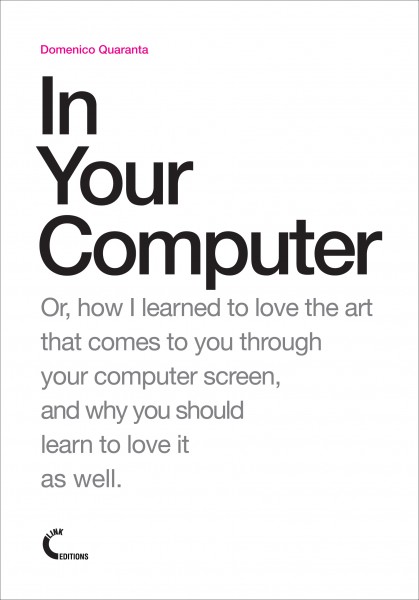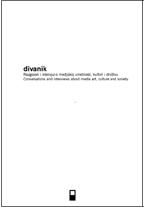Calvin Tomkins: Marcel Duchamp: The Afternoon Interviews (2013)
Filed under book | Tags: · art, interview

“In 1964, Calvin Tomkins spent a number of afternoons interviewing Marcel Duchamp in his apartment on West 10th Street in New York. Casual yet insightful, Duchamp reveals himself as a man and an artist whose playful principles toward living freed him to make art that was as unpredictable, complex, and surprising as life itself. Those interviews have never been edited and made public, until now. The Afternoon Interviews, which includes an introductory interview with Tomkins reflecting on Duchamp as an artist, guide and friend, reintroduces the reader to key ideas of his artistic world and renews Duchamp as a vital model for a new generation of artists.”
Publisher Badlands Unlimited/National Philistine, 2013
ISBN 1936440393, 9781936440399
110 pages
PDF (10 MB, no OCR, updated 2024-7-25)
Note: Apple and Amazon ebook version includes additional multimedia content. (added on 2013-7-30)
See also Tomkins’ The World of Marcel Duchamp, 1887–1968 (1966/72).
Comments (8)Domenico Quaranta: In Your Computer (2011)
Filed under book | Tags: · art, biotechnology, curating, internet, interview, media art, media theory, net art, new media, software art, technology, video games

This book is a collection of texts written by Domenico Quaranta between 2005 and 2010 for exhibition catalogues, printed magazines and online reviews: a pocket version of what the author would save from the universal flood, in a world without computers. It documents most of the fields of research he has focused on critically: from Net Art to Software Art and videogames, from biotechnologies to the debate around curating and the positioning of New Media Art in the contemporary landscape, and back to Net Art again.
This itinerary is traced through a selection of essays, monographic texts and interviews with artists and curators, in no particular order: from Eva and Franco Mattes to Casey Reas, from UBERMORGEN.COM to Oliver Laric, from Cory Arcangel to Tale of Tales, from Jon Ippolito to Gazira Babeli.
As the author writes in the introduction: «We are in the midst of a major change. At the end of the process, not only the way we live, work, travel and communicate, but also the political and economical structures and the social organization we are used to will probably be fundamentally different from how they are now. In art, this change will be complete when the way we make, circulate and understand art is completely different from the way we do it now; and when the way we understand the difference between copies and original and between art and non-art will have adapted to the new models created by the information age. The most we can do now is to take our time, adapt to our new living conditions, be aware of the process going on and look to the most radical propositions around for signals of what is to come. In the awareness that we probably don’t have to look that far: these signals are already here, in our computers.»
Translation and editing: Anna Rosemary Carruthers
Publisher: LINK Editions, Brescia 2011.
ISBN: 978-1-4467-6021-5
180 pages
Licensed under the Creative Commons Attribution-NonCommercial-ShareAlike 3.0 Unported License.
publisher
lulu.com
via Domenico Quaranta
kuda.org (eds.): divanik: Conversations and Interviews about Media Art, Culture and Society (2004) [English/Serbian]
Filed under book | Tags: · capitalism, internet, interview, media art, media culture, media theory, tactical media, technology

“divanik is a collection of interviews conducted in the period from 2001 to 2004 which represents intersection of research in the field of new technologies, culture and society. Interviews present network of people and organizations that make one part of the contemporary media art and theory scene. New media center_kuda.org monitored those phenomena that have interdisciplinary and intermedial character, and by inviting the significant protagonists in media art and theory the intention was to give to the local public an insight at the happenings in this field.
Research of the media is the research of the history of communication, and communication today is a bio-product of the information age, exchange of valuables in the capitalist coordinate system in which the concepts and ideas are treated as meaningful goods and products. On the other hand communication is also a tool that changes the same coordinate system.
As a communication practice the phenomenon of the interview is immanent to Internet culture. Interview represents concise form of communication and it is a useful instrument in the scientific work as meta-text that follows complex theory or artwork. In the interviews authors present contexts in which they were creating and their points of view and this direct communication through the actual questions presents real-time articulated energetic potential. That is also a chance to analyze and restructure certain topics in the form that couldn’t occur in theoretic and artistic work. Interview is a sublimation of different aspects, overlapping and interdisciplinarity that at a given moment presents unique thinking system.
The development of information and communication technologies also brought along new social ontology that is manifested in the social, political and culture field. Instantaneity of history, accumulation and pace of technological development stipulates momentary reaction and critical analysis.
The goal of these interviews is to critically analyze and present to the wider audience certain art and socio-political phenomena. Within the kuda.read edition the accent is put on pointing out to the expanded referential system inside the new media and culture that spreads from the marginal social practice to academic theory and scientific research.”
Includes interviews with Geert Lovink, Raqs Media Collective, Saskia Sassen, Marcus Neustetter, Bureau d’Etudes, Marina Grzinic, Cindy Cohn, and Steve Kurtz.
Serbian title: divanik: Razgovori o medijskoj umetnosti, kulturi i društvu
Publisher Daniel print, Novi Sad
kuda.read series, 003
Creative Commons Attribution-NonCommercial-ShareAlike 1.0 License
ISBN 8690621105
123 pages
PDF, PDF (updated on 2018-6-17)
Comment (0)
